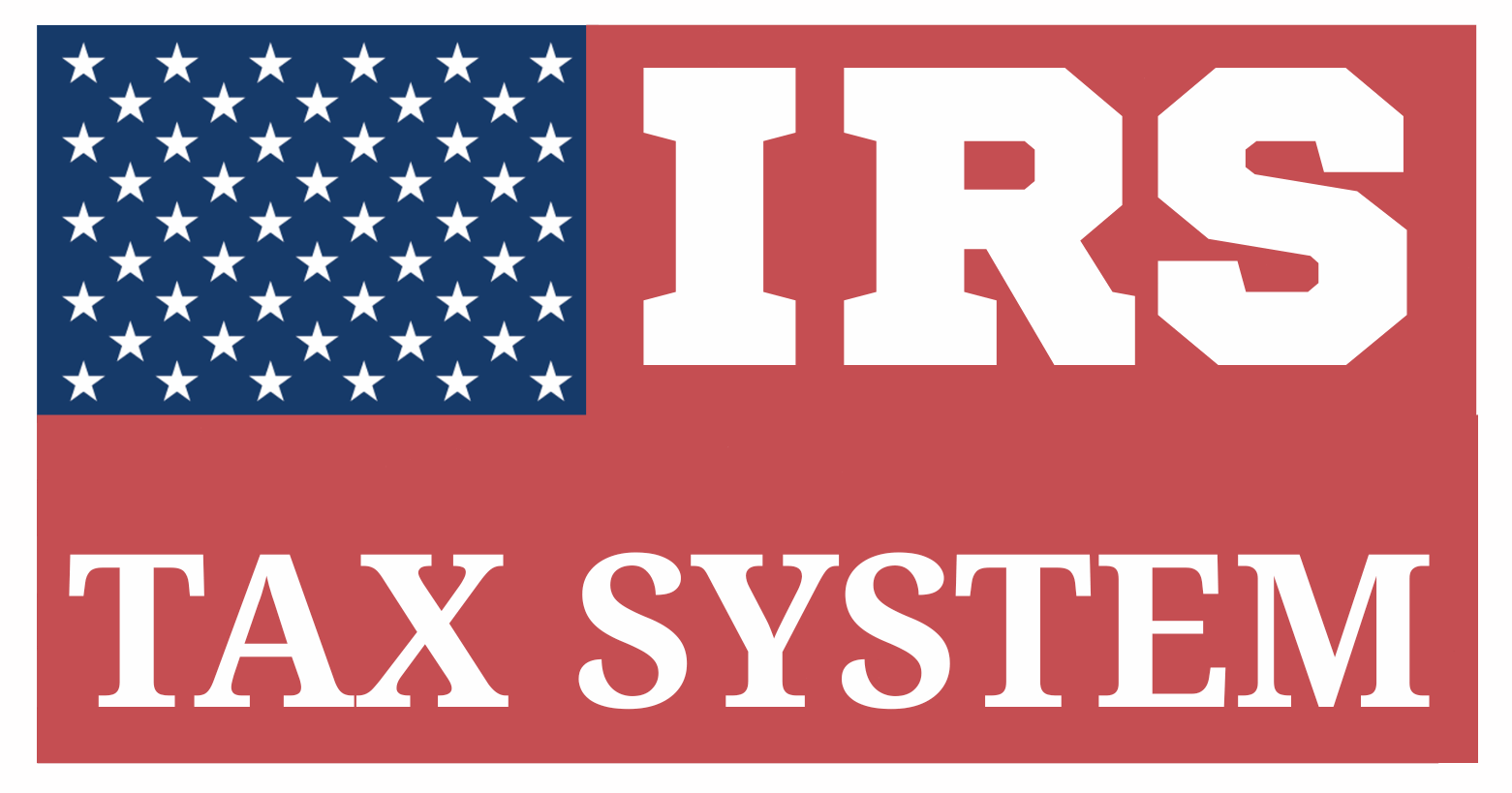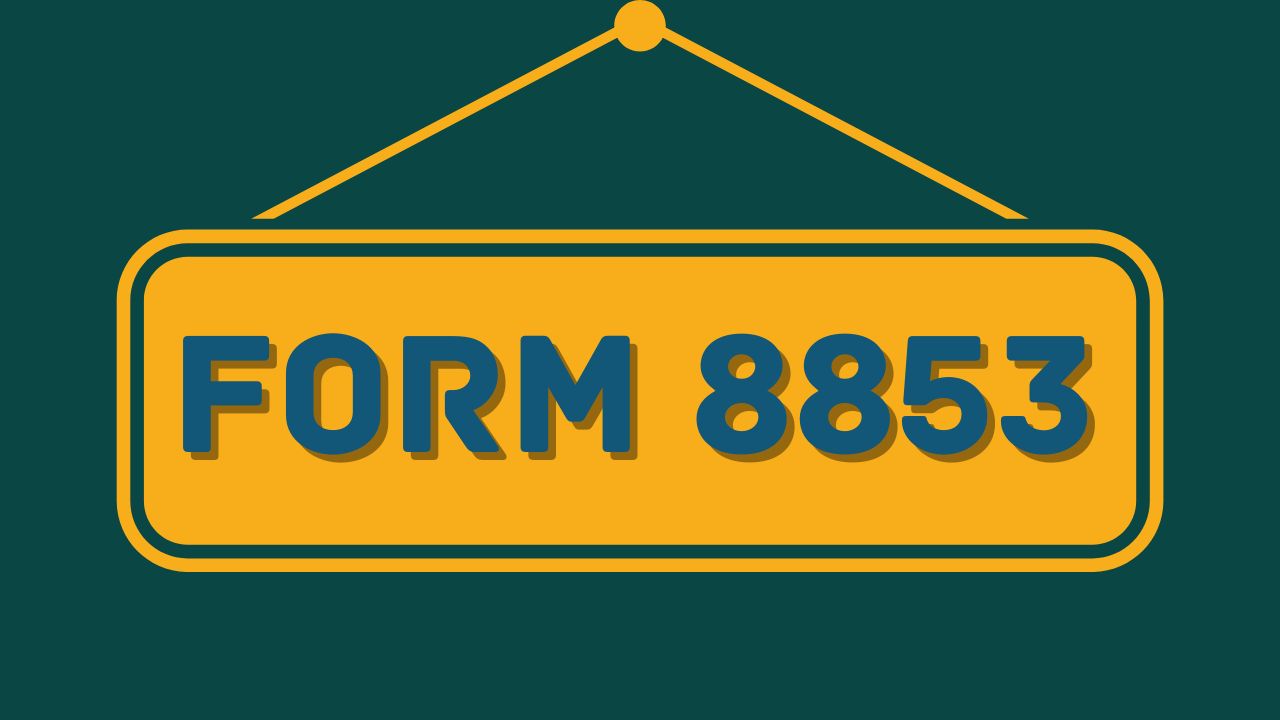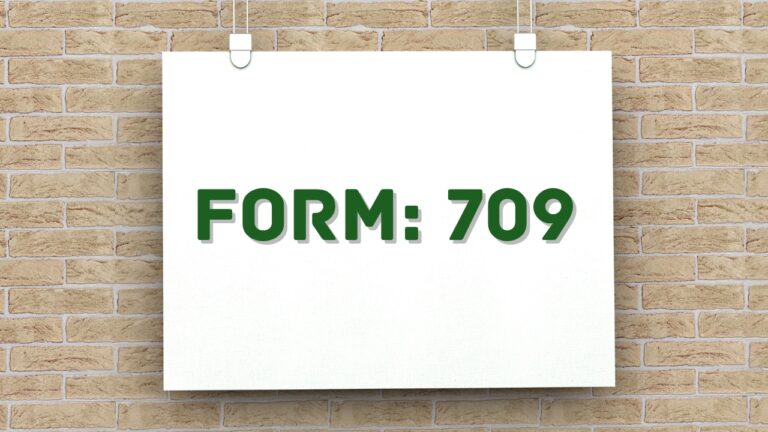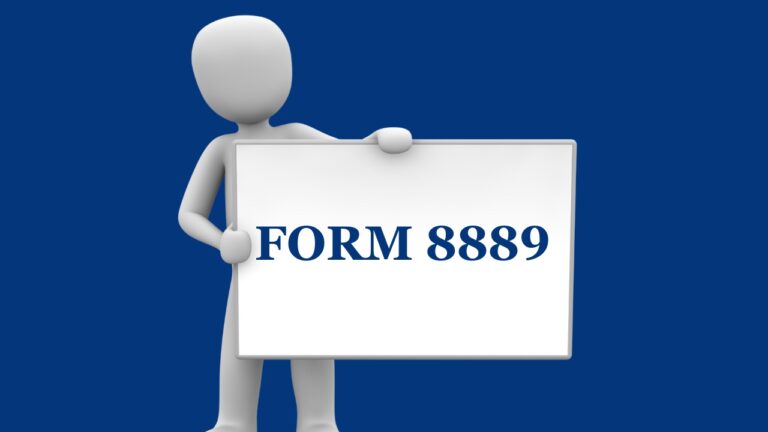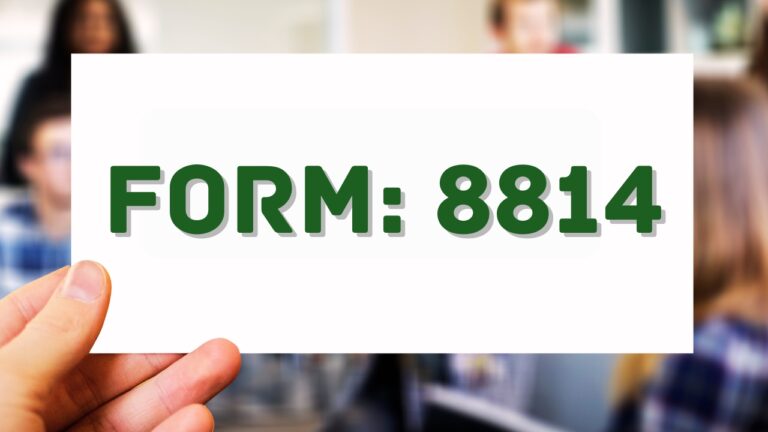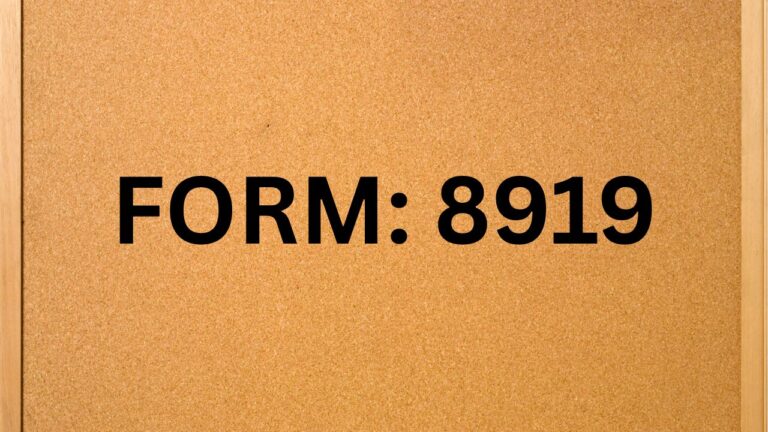Form 8853: A Clear Overview
Table of Contents
Unlocking The Essential Information On Form 8853
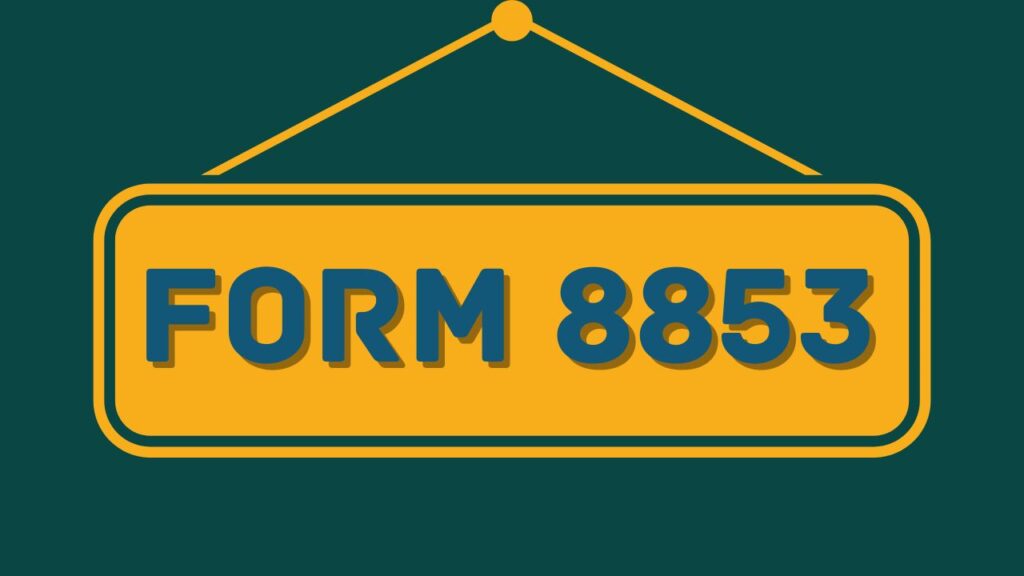
IRS Form 8853 is used by taxpayers to report contributions to and distributions from Archer Medical Savings Accounts (MSAs) and to report income and deductions related to Long-Term Care (LTC) Insurance Contracts. It also captures information related to specific Medicare Advantage MSA withdrawals
This form is filed along with Form 1040 or 1040-NR if you have transactions involving Archer MSAs or LTC policies in a tax year.
Purpose of IRS Form 8853
The primary purpose of IRS Form 8853 is to report certain tax-advantaged medical accounts and insurance contracts that may have taxable consequences, deductible benefits, or both. It serves as a supplemental form to Form 1040 and ensures the IRS can properly assess income, deductions, and penalties related to these specialized financial instruments.
Form 8853 is divided into three sections, each serving a distinct reporting purpose:
1. Archer Medical Savings Accounts (MSAs)
Purpose:
To report:
- Contributions made to Archer MSAs (by the taxpayer or others)
- Distributions taken from the account
- Whether distributions were used for qualified medical expenses
- Taxable amounts and potential penalties on non-qualified distributions
Why it matters:
Archer MSAs are tax-advantaged accounts designed for people with high-deductible health plans (HDHPs). While qualified distributions are tax-free, any misuse of funds must be reported as income and may incur a 20% penalty unless exceptions apply.
2. Medicare Advantage MSAs
Purpose:
To report:
- Distributions from Medicare Advantage Medical Savings Accounts
- Amounts used for qualified medical care
- Any portion of the distribution that is taxable or subject to penalties
Why it matters:
Although funded by Medicare, these MSAs function similarly to Archer MSAs. The IRS requires tracking of how these funds are spent, especially since non-medical use results in taxable income.
3. Long-Term Care (LTC) Insurance Contracts
Purpose:
To report:
- Taxable benefits received from long-term care insurance contracts
- Premiums paid for qualified long-term care insurance
- Premium deductions taken, limited according to the taxpayer’s age bracket.
Why it matters:
LTC insurance policies can provide either per diem benefits or reimbursements. Any portion of the benefit above the IRS exclusion limit must be reported as taxable income. On the other hand, qualified premium payments may be partially deductible, depending on your age and whether you itemize deductions.
Structure of IRS Form 8853
Archer MSAs, Medicare Advantage MSAs & Long-Term Care Insurance Contracts
IRS Form 8853 is organized into three main parts, each corresponding to a distinct type of health-related financial arrangement. You should complete only the sections that apply to your situation for the tax year.
Part I – Archer Medical Savings Accounts (MSAs)
Who completes this: Taxpayers who had contributions to or distributions from an Archer MSA in the tax year.
Purpose: To report:
- MSA deposits made either by the employee or the employer.
- Distributions taken from the account
- Whether those distributions were used for qualified medical expenses
- Taxable income and 20% additional tax if applicable
Key lines include:
- Line 1: Archer MSA contributions
- Line 3: Distributions received
- Line 5–9: Qualified vs. non-qualified expenses
- Line 10–12: Taxable portion + penalty (if any)
Note: If your employer already reported contributions on your W-2, you do not include them again.
Part II – Medicare Advantage MSAs
Who completes this: Taxpayers who received distributions from a Medicare Advantage MSA (only available to certain Medicare beneficiaries).
Purpose: To determine:
- Whether funds were used for qualified medical expenses
- Whether any portion must be reported as part of gross income
- If the 20% penalty applies to unqualified distributions
Key lines include:
- Line 13–17: Total distributions, expenses, and taxable income
Note: Medicare deposits these funds directly into your MSA, but non-medical use is still taxable.
Part III – Long-Term Care (LTC) Insurance Contracts
Who completes this: Taxpayers who:
- Received LTC insurance benefits (reimbursement or per diem)
- Paid premiums for qualified long-term care insurance and are eligible to deduct them
Purpose:
- Report income from LTC policies (if any)
- Claim deductions for qualified LTC premiums, subject to IRS age-based limits
Key lines include:
- Line 18: Employer-paid premiums (if excluded from income)
- Line 19: Benefits received
- Line 20: Taxable LTC income (if any)
- Line 21: Deductible LTC insurance premiums
Note: LTC deductions may flow to Schedule A if you itemize.
IRS Form 8853 – Step-by-Step Calculation Guide
Maximizing Accuracy in Reporting, Income Inclusion & Deductions
PART I – Archer Medical Savings Account (MSA)
Used to report your contributions and withdrawals from an Archer MSA and determine if any portion is taxable or penalized.
Used to report:
- Contributions (not shown on W-2)
- Distributions from MSA
- Taxable portion of distributions
- Additional 20% tax for non-qualified withdrawals
Step-by-Step MSA Calculation:
1. Contribution Calculation
Allowed MSA Contribution Limit (2025):
- Self-only coverage: $3,650
- Family coverage: $7,300
Only enter your contributions that were NOT reported on your W-2.
Line 1 = Your personal contributions (up to the limit)2. Distribution Calculation
Line 3 = Total MSA distributions (from Form 1099-SA, Box 1)3. Qualified Expense Calculation
Line 5 = Qualified medical expenses paid using MSA funds4. Taxable Amount
Line 6 = Line 3 (total distributions) – Line 5 (qualified expenses)- A positive result indicates the amount must be included in taxable income.
- If result is zero or negative → no tax
5. Additional 20% Tax
Line 7 = Line 6 × 0.20 (if no exceptions apply)Example 1 – Qualified Use Only
- Your Contribution: $2,500
- Distribution Taken: $2,000
- Used for Qualified Medical Expenses: $2,000
Calculation:
- Line 6 (Taxable Income) is calculated as $2,000 – $2,000 = $0
- No penalty (Line 9 = $0)
- Line 1: $2,500 (may be deductible if not reported on W-2)
Outcome: No tax or penalty due. Contribution might be deductible.
Example 2 – Partial Non-Qualified Use
- Distribution: $5,000
- Qualified Expenses: $3,500
- Non-qualified Use: $1,500
Calculation:
- Line 6: $1,500 (Taxable Income)
- Line 9: $1,500 × 20% = $300 (Penalty)
Outcome: $1,500 included in income on 1040, $300 penalty on Form 8853.
Example 3 – Excess Contribution
- Contribution Limit for 2025: $3,650
- Actual Contribution: $5,000
→ Excess: $5,000 – $3,650 = $1,350
Penalty (if not withdrawn timely):
- 6% × $1,350 = $81 (use Form 5329 to report this)
Outcome: Possible penalty + loss of deduction if not corrected.
PART II – Medicare Advantage MSA
Report Medicare-funded distributions used for qualified medical expenses.
Step-by-Step Medicare MSA Calculation:
1. Total Distribution
Line 13 = Total Medicare Advantage MSA distributions2. Qualified Expenses
Line 14 = Medical expenses paid from the MSA3. Taxable Amount
Line 15 = Line 13 – Line 144. Penalty
Line 16 = Line 15 × 0.20 (if no exceptions)Example 4 – Non-Medical Use of Funds
- Distribution from MSA: $2,200
- Qualified Expenses: $1,000
- Non-qualified Use: $1,200
Calculation:
- Line 15: $2,200 – $1,000 = $1,200 taxable
- Line 16: $1,200 × 20% = $240 penalty
Outcome: $1,200 is included in taxable income, $240 added to tax liability.
Example 5 – Fully Qualified Use
- Total distribution = $3,000
- All used for doctor bills, lab work, prescriptions = $3,000
Line 15 = $0 → No tax
Line 16 = $0 → No penalty
Outcome: No income inclusion, no penalty.
PART III – Long-Term Care (LTC) Insurance Contracts
Use to report:
- Taxable LTC insurance benefits
- Deductible LTC insurance premiums
Step-by-Step LTC Calculation:
1. LTC Insurance Benefit Type
- Per diem policy → subject to IRS daily limit
- Reimbursement policy → tax-free if expenses are qualified
2. Per Diem Exclusion Calculation (2025 Limit = $420/day)
Exclusion = Number of covered days × $420Taxable Benefit = Total per diem benefit – Exclusion3. Deductible LTC Premiums
Deductible = Lesser of actual premiums paid OR IRS age-based limit| Age (End of Year) | Max Deductible Premium (2025) |
| 40 or younger | $470 |
| 41–50 | $880 |
| 51–60 | $1,760 |
| 61–70 | $4,720 |
| Over 70 | $5,960 |
Example 6 – LTC Per Diem Exceeds IRS Limit
- Total days of care: 100
- Per diem benefit: $550/day × 100 = $55,000
- IRS exclusion limit: $420/day × 100 = $42,000
- Excess/taxable: $55,000 – $42,000 = $13,000
Report:
- Line 19: $55,000 (Total received)
- Line 20: $13,000 (Taxable amount)
Outcome: $13,000 added to Form 1040 income.
Example 7 – Deductible Premium (Age-Based Limit)
- Age: 67
- Total LTC premium paid: $5,500
- 2025 age limit (61–70): $4,720
Calculation:
- Line 21: Lesser of actual premium or limit = $4,720
Outcome: $4,720 can be claimed as a Schedule A medical expense deduction (if itemizing).
Related Forms & Schedules for IRS Form 8853
IRS Form 8853 does not function in isolation. Several supporting IRS forms and schedules may be required based on your contributions, distributions, or penalties. Below is a breakdown by category, linking Form 8853 with the IRS documents it commonly interacts with.
1. Form 1040 – U.S. Individual Income Tax Return
Purpose: Main return to which Form 8853 data flows.
Key Integration Points:
| Form 8853 Line | Where it Flows on Form 1040 |
| Line 6 (Taxable MSA distribution) | Schedule 1 (Form 1040), Line 8z and then to Form 1040, Line 8 |
| Line 7 or 9 (20% penalty) | Form 1040, Line 23 (“Additional Taxes”) |
| Line 21 (LTC insurance premium deduction) | Schedule A (Itemized Deductions), Line 1 (if itemizing) |
2. Schedule 1 – Reporting Other Income and Above-the-Line Adjustments
Purpose: Used to report adjustments and miscellaneous income.
- Archer MSA taxable amounts (non-qualified withdrawals) go here.
- Report taxable LTC insurance benefits from Line 20 (Form 8853) here as well if applicable.
3. Schedule A (Form 1040) – Itemized Deductions
Purpose: To deduct qualifying medical expenses, including eligible long-term care (LTC) premiums.
- Enter Line 21 of Form 8853 (eligible LTC premiums) under Medical Expenses on Line 1.
- Must exceed 7.5% of AGI to be deductible.
4. Form 1099-SA – Distributions From HSAs, MSAs, or MA MSAs
Purpose – To Report Withdrawals from Archer or Medicare Advantage MSAs.
- Provided by your MSA trustee or bank.
- Data from Box 1 (gross distribution) → goes to Line 3 or 13 of Form 8853.
- Box 3 will tell you whether it was for an Archer MSA or MA MSA.
5. Form 5498-SA – Contributions to MSAs and HSAs
Purpose: Summarizes total contributions (made by you or your employer) to your Archer MSA.
- Sent by the MSA provider.
- Confirms what you or your employer contributed, used to complete Line 1 and Line 2 of Form 8853.
6. Form W-2 – Wage and Tax Statement
Purpose – Displays Employer Contributions to Archer MSAs (Box 12, Code R).
- Use this to complete Line 2 of Form 8853.
7. Form 5329 – Reporting Penalties on Retirement Accounts and MSAs
Purpose: To report penalties for:
- Excess MSA contributions (more than the IRS limit)
- Failure to withdraw excess before the deadline
Where it Connects:
- Use Form 5329 if you made excess contributions and didn’t withdraw them in time.
- Excess Contributions Subject to 6% Penalty Each Year Until Fixed.
8. Form 8853 Instructions (Pub 969 & Pub 502)
Though not forms themselves, these are critical reference publications:
- Pub 969: Health Savings Accounts (HSAs) and Other Tax-Favored Health Plans → explains MSA eligibility, limits, and rules.
- Pub 502: Medical and Dental Expenses → defines what qualifies as a medical expense for tax purposes.
Conclusion
IRS Form 8853 is essential for individuals with Archer MSAs, Medicare Advantage MSAs, or Long-Term Care insurance contracts. Accurately completing this form ensures:
- Tax-free treatment of eligible medical distributions
- Proper deductions for LTC insurance
- Avoidance of unexpected penalties or audit issues
Make sure to use the correct version of the form each year and maintain detailed records of all contributions, distributions, and qualified expenses.
Frequently Asked Questions (FAQs)
What is IRS Form 8853 used for?
Form 8853 reports:
-Contributions and withdrawals from Archer Medical Savings Accounts (MSAs)
-Distributions from Medicare Advantage MSAs
–Long-Term Care (LTC) insurance contract benefits and eligible premium deductions
What is the 2025 contribution limit for Archer MSAs?
-Self-only HDHP coverage: $3,650
-Family HDHP coverage: $7,300
Are Archer MSA withdrawals taxable?
Only if used for non-qualified expenses. Qualified medical expenses are tax-free. Non-qualified withdrawals:
-Are taxable
-May also be subject to a 20% penalty
What are qualified medical expenses for MSAs?
These include expenses for:
-Doctor visits
-Prescriptions
-Hospital stays
-Dental, vision, and some long-term care
(Refer to IRS Publication 502)
Can I use Medicare MSA funds for non-medical expenses?
You can, but they will be:
–Fully taxable
-Subject to a 20% penalty, unless you’re 65 or older, disabled, or deceased
Are long-term care insurance benefits taxable?
It depends:
–Reimbursement policies (pay actual expenses) → not taxable
–Per diem policies (pay daily rate) → taxable only if payments exceed IRS daily limits
Can I deduct long-term care insurance premiums?
Yes—if you itemize. The deduction is subject to:
-Age-based limits (e.g., $4,720 for age 61–70 in 2025)
-Medical expenses must exceed 7.5% of your AGI
Where do I enter the deductible LTC premiums?
Enter the eligible amount from Form 8853, Line 21 onto Schedule A, under medical expenses.
Can I file Form 8853 electronically?
Yes. Most tax software supports Form 8853. If you’re filing Form 1040 electronically, Form 8853 is submitted as an attached schedule.
Do I still file Form 8853 if I didn’t use my MSA during the year?
If you had no contributions or distributions, you do not need to file Form 8853. If your employer contributed, or you received a distribution, you must file it.
